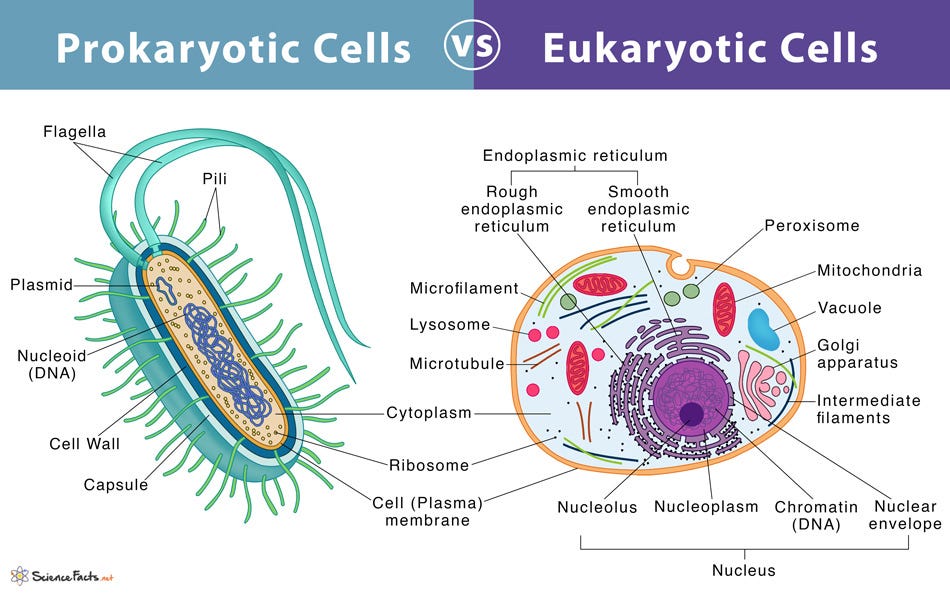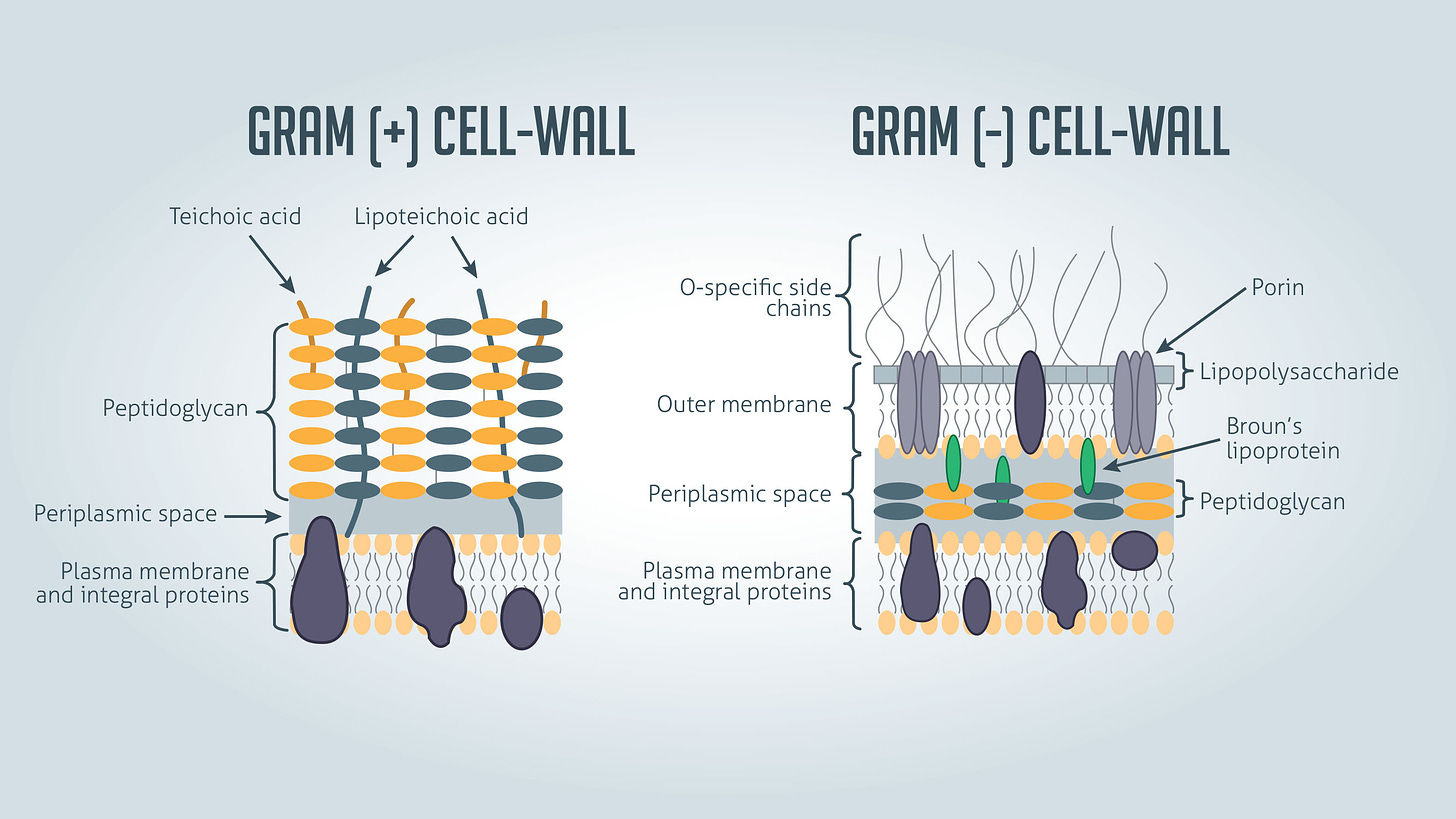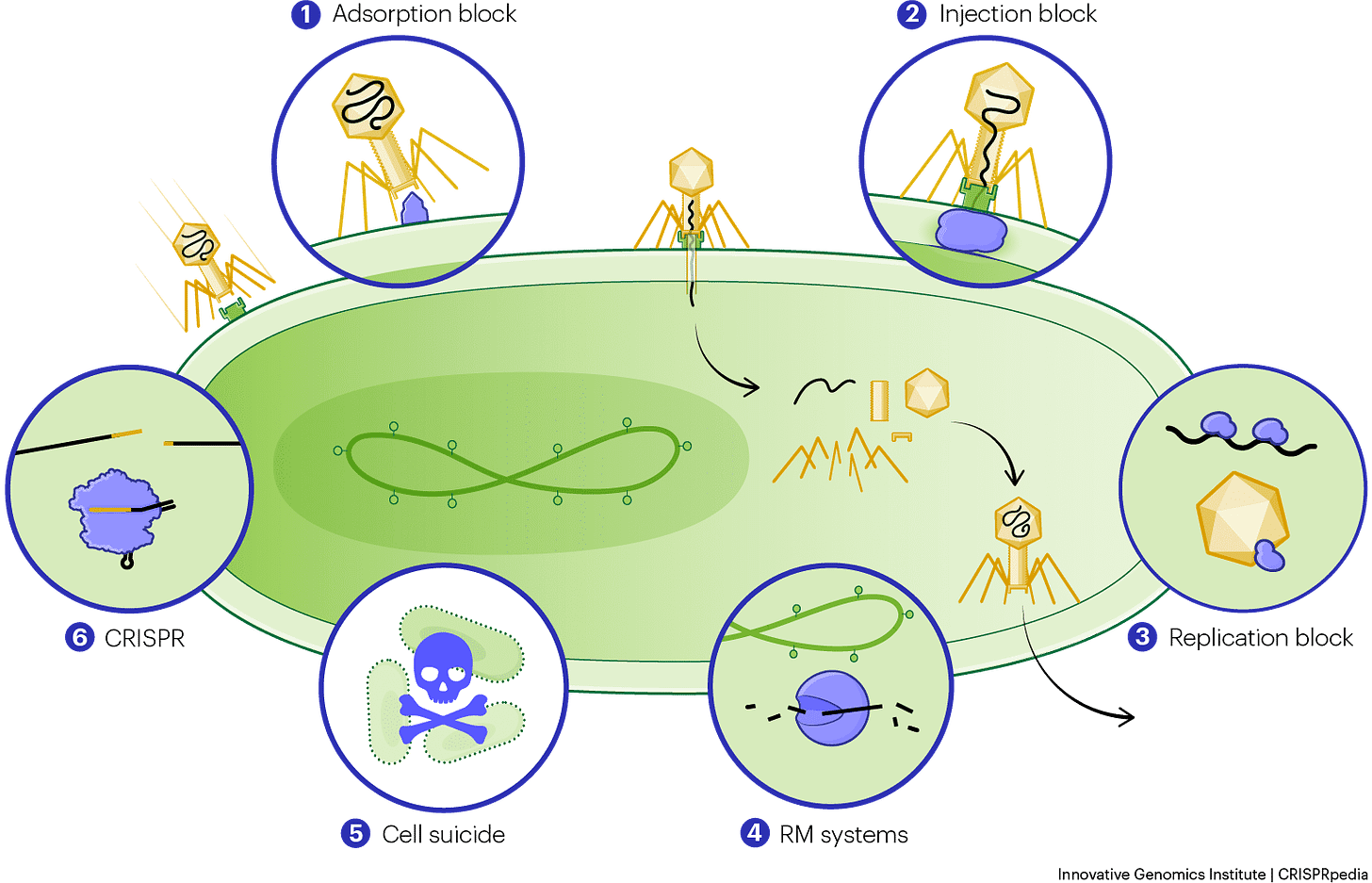Why Gram Negative Bacteria Like E coli are more Easily Transfected by Lipid Nanoparticles (NOT GRAM POSITIVE LIKE BIFIDOBACTERIA), why they (E coli) are used in Biotech/pharma, and the mechanisms.
You cannot just transfect every cell in the human body. Let's start with bacteria.
Now, Shall We Begin?
(all of these posts will be wrapped up into a bow, and will explain, in detail, what is going on with gut bacteria and COVID. The recent studies involving COVID and Bifidobacterium are grossly inaccurate, contain gargantuan holes in data collection and data analysis—with many important variables completely ignored.)
The biotech industry, especially when wanting to transfect a cell, relies heavily on gram negative bacteria to be the “factories” which make what are called “recombinant proteins”.
Here’s a fast video we have looked at in the past which describes how E coli are used to make insulin. That’s correct. Insulin.
Insulin is a protein.
Reading on recombinant proteins
Right now, we are focusing on why gram negative bacteria is used instead of gram positive bacteria when it comes to transfecting bacteria.
The basics:
The bacteria commonly used for transfection of lipid nanoparticles to express recombinant proteins are typically Gram-negative bacteria, such as Escherichia coli (E. coli).
Gram-negative bacteria are preferred for several reasons:
Cell Wall Structure:
Gram-negative bacteria have a thinner peptidoglycan layer in their cell wall compared to Gram-positive bacteria.
This thinner layer makes them more susceptible to the action of lipid nanoparticles and facilitates the uptake of foreign DNA or RNA.
Outer Membrane
Gram-negative bacteria have an outer membrane that contains porins, which can facilitate the entry of lipid nanoparticles and their cargo into the bacterial cell.
Endotoxin Concerns
Gram-negative bacteria, like E. coli, naturally produce lipopolysaccharides (LPS), also known as endotoxins. This is a HUGE concern in protein expression systems for human therapeutic use.
Gram-positive bacteria are less commonly used for transfection of lipid nanoparticles compared to Gram-negative bacteria for several reasons:
Cell Wall Structure
Gram-positive bacteria have a thicker peptidoglycan layer in their cell wall compared to Gram-negative bacteria.
This thicker layer can present a physical barrier to the entry of lipid nanoparticles and their cargo, making transfection less efficient.
Lack of Outer Membrane
Gram-positive bacteria lack an outer membrane, which in Gram-negative bacteria contains porins that can facilitate the entry of molecules like lipid nanoparticles.
Without this additional layer, Gram-positive bacteria may be less receptive to the uptake of foreign DNA or RNA delivered by lipid nanoparticles.
Endotoxin Concerns
Gram-positive bacteria generally produce fewer endotoxins compared to Gram-negative bacteria. While this might be advantageous in certain contexts, such as in therapeutic protein production where endotoxins can be problematic, it also means that Gram-positive bacteria may not be as robust for lipid nanoparticle-mediated transfection, which often requires efficient cellular uptake.
Transfection of Gram-positive bacteria by a lipid nanoparticle presents several challenges beyond the cell wall structure and lack of an outer membrane, including:
Efficiency of Uptake
Gram-positive bacteria often lack efficient mechanisms for the uptake of foreign DNA or RNA compared to Gram-negative bacteria, resulting in much lower transfection efficiency, requiring optimization of transfection protocols to enhance delivery and expression of recombinant proteins.
Cell Wall Integrity
The thick peptidoglycan layer of Gram-positive bacteria provides structural integrity but also acts as a barrier to the entry of exogenous molecules like the lipid nanoparticle.
Host Defense Mechanisms
Gram-positive bacteria have evolved various defense mechanisms against foreign DNA, including restriction-modification systems and CRISPR-Cas systems. These systems can degrade or modify foreign DNA, reducing the potential not only for an LNP entering, but anything happening inside if pieces of DNA plasmid do manage to make it into the gram positive bacteria. The gram positive bacteria, such as Bifidobacterium, will fight against plasmids from entering, and usually, WIN.
Toxicity of Transfection Agents
Some transfection agents, such as cationic lipids or polymers commonly used for transfection, may exhibit toxicity when interacting with bacteria.
Additionally, if one were to witness changes in the gut microbiome due to actual transfection occurring, or destruction of parts of the gut microbiome, you would see a reduction, by this mechanisms, primary of GRAM NEGATIVE BACTERIA—NOT BIFIDOBACTERIUM.
Even more important, positively charged lipid nanoparticles have been shown to have tropism (preference) for the LUNGS NOT the gut, and when this occurs, MASSIVE CLOTTING cascades can occur (more in the next stack on this).
(positively charged LNPs are not going to hang out in the gut)
This is basic biotech science. It is general knowledge.
Gene Expression Regulation
Gram-positive bacteria often have different gene expression regulation mechanisms compared to Gram-negative bacteria.
Also the genome of Gram-positive bacteria can be challenging due to differences in DNA repair mechanisms and chromosomal structure compared to Gram-negative bacteria.
Let’s dive even deeper into the mechanisms:
Host Defense Mechanisms:
Restriction-Modification Systems
Gram-positive bacteria, like many prokaryotes, possess restriction-modification (RM) systems.
These systems consist of restriction enzymes that cleave foreign DNA at specific recognition sites and modification enzymes that methylate the bacterial genome to protect it from self-digestion.
When foreign DNA lacking these methylations enters the cell, it becomes a target for restriction enzymes, leading to its degradation. This defense mechanism reduces the efficiency of transfection by degrading exogenous DNA before it can be integrated or expressed.
CRISPR-Cas Systems
Do you know where scientists got the idea to edit the genome? BACTERIA!
CRISPR-Cas systems are adaptive immune systems found in many bacteria and archaea.
They provide protection against foreign genetic elements, including viruses and plasmids, by incorporating short segments of foreign DNA into the bacterial genome as "spacers."
These spacers are transcribed and used as guides to target and cleave foreign DNA upon subsequent encounters.
While primarily known for their role in defense against viruses, CRISPR-Cas systems can also target exogenous DNA introduced during transfection, reducing its stability and expression.
Gene Expression Regulation
Promoters and Regulatory Elements
Gram-positive bacteria often have different gene expression regulation mechanisms compared to Gram-negative bacteria, including differences in promoter sequences, transcription factors, ribosome binding sites, and post-transcriptional regulatory elements.
You’re not going to transfect that gram positive bacteria, including the Bifidobacterium.
Integration and Stability
DNA Repair Mechanisms
Gram-positive bacteria typically have different DNA repair mechanisms compared to Gram-negative bacteria. These differences can affect the integration and stability of foreign DNA within the bacterial genome.
For example, differences in homologous recombination efficiency or mismatch repair pathways may influence the frequency and fidelity of DNA integration events, meaning even if by the random fluke chance an LNP gets inside that Bifidobacterium or other gram positive bacteria, chance is miniscule you are going to transfect it.
Summary: it’s nearly impossible to transfect gram positive bacteria such as the Bifidobacterium. Even if you could, even if the LNP made it in there, you are not going to see the bacteria accept what is inside the LNP.
Additionally, and to reiterate, if the LNP DID manage to transfect cells in the gut, it is not a reduction in gram positive bacteria like Bifidobacterium that would be reduced, it would be the numbers of gram negative bacteria.
Try again.
I might just come back to twitter (X) for this one. Some people are not presenting accurate information.






